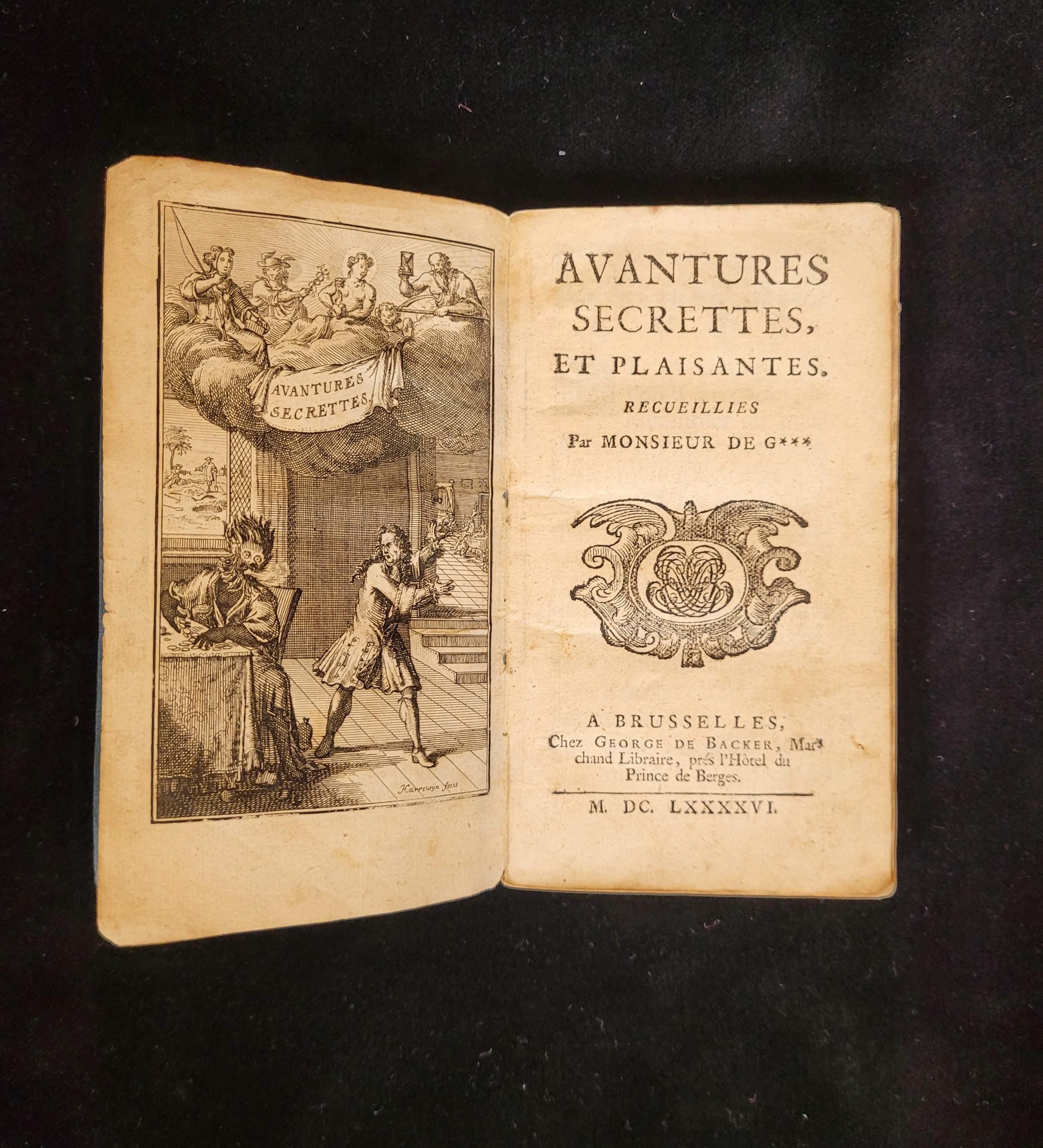 Image 1 of 1
Image 1 of 1


Aventures Secrettes et Plaisantes. Recuillies par Monsieur de G***
[de GRAAFT] Aventures Secrettes et Plaisantes. Recuillies par Monsieur de G***
‘A Brusselles’: George de Backer, 1696
12mo. (145 x 80mm). Engraved frontispiece by Jacobus Harrewijn, woodcut decoration to title. First quire starting loose but holding, occasional light staining to a few margins and faint ink spots to text, small faint damp stain to upper edge, not touching text. Near-contemporary blue paper wrappers, the edges a little creased and one or two straightened creases to covers, spine a little faded with tiny lacks at head and foot, but generally clean and bright, small paper title label to spine lettered in ink. Provenance: Wallsheim, 19th century ownership inscription inside upper cover.
A collection of saucy tales from the France of Louis XIV, peopled by masked and jealous husbands, amorous fathers-in-law, deceived doctors, abbots in parks, and aristocratic ladies with Needs (or simply out for amusement).
A scarce edition of this work, still in its paper wrappers. The work is anonymous, and the attribution to de Graaft is thanks to Barbier. There was another edition in Paris in the same year, similar, but not identical, and without the frontispiece. One would assume the attribution of Brussels as the place of printing is fictitious, but Jacobus Harrewijn is known to have been active there from 1695 on, so it’s possible that there were two editions published at around the same time in Paris and Brussels.
Three copies only on WorldCat.
[de GRAAFT] Aventures Secrettes et Plaisantes. Recuillies par Monsieur de G***
‘A Brusselles’: George de Backer, 1696
12mo. (145 x 80mm). Engraved frontispiece by Jacobus Harrewijn, woodcut decoration to title. First quire starting loose but holding, occasional light staining to a few margins and faint ink spots to text, small faint damp stain to upper edge, not touching text. Near-contemporary blue paper wrappers, the edges a little creased and one or two straightened creases to covers, spine a little faded with tiny lacks at head and foot, but generally clean and bright, small paper title label to spine lettered in ink. Provenance: Wallsheim, 19th century ownership inscription inside upper cover.
A collection of saucy tales from the France of Louis XIV, peopled by masked and jealous husbands, amorous fathers-in-law, deceived doctors, abbots in parks, and aristocratic ladies with Needs (or simply out for amusement).
A scarce edition of this work, still in its paper wrappers. The work is anonymous, and the attribution to de Graaft is thanks to Barbier. There was another edition in Paris in the same year, similar, but not identical, and without the frontispiece. One would assume the attribution of Brussels as the place of printing is fictitious, but Jacobus Harrewijn is known to have been active there from 1695 on, so it’s possible that there were two editions published at around the same time in Paris and Brussels.
Three copies only on WorldCat.

